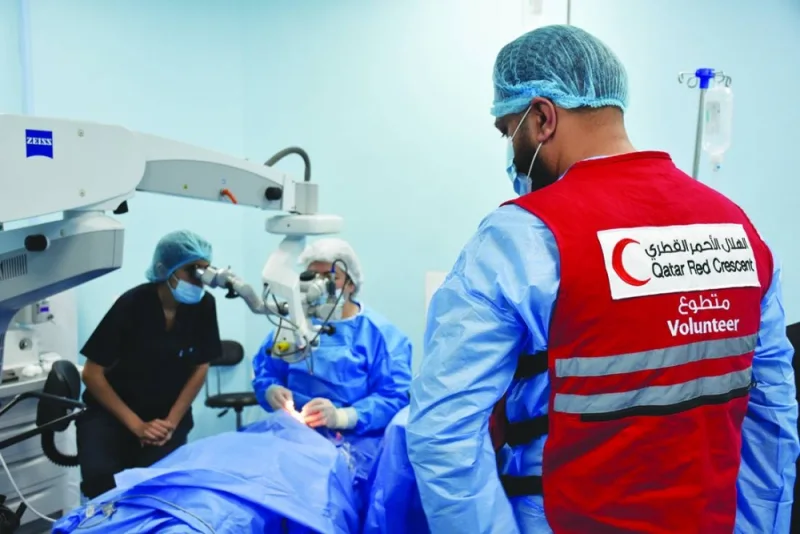Qatar Red Crescent Society (QRCS) has concluded its eye disease treatment medical convoy, which it carried out at camps of displaced Iraqis and Syrian refugees in Iraq. About 1,300 patients benefited from the convoy, which included diagnosis and referral for surgical intervention. The convoy was carried out in partnership with the Iraqi Red Crescent Society (IRCS) and the Erbil Health Department.
A QRCS press release said that the project has made a significant contribution to alleviating the suffering of vulnerable groups, as well as providing health support to displaced Iraqis and Syrian refugees living in a difficult humanitarian environment, through providing healthcare and surgical treatments for eye patients, in addition to reducing the financial and psychological burden on patients by providing them with appropriate treatment free of charge and supporting the hospital with specialised and accurate medical devices.
As part of the project, quality healthcare was provided for common eye diseases such as cataracts, glaucoma, and eye pressure by launching an eye examination campaign in the camps, which targeted 1,340 displaced and refugee residents inside the camps. A total of 137 surgeries were performed during the project period, as well as the provision of the necessary medicines and treatment for cases requiring surgical intervention.
During the same period, an awareness film was created in co-ordination with the hospital administration, which was screened permanently in the hospital waiting halls for visitors to view. As a result of the awareness initiative within the Eye Hospital, more than 24,000 individuals have benefited.
One of the most significant achievements of this project was the use of the first advanced device that was used in Erbil, which was an optical coherence tomography (OCT) machine, allowing for precise examination and diagnosis of eye diseases, as well as retinal examinations.
In its overall form, the project aimed to examine more than 1,200 patients inside the camps and refer 100 patients to the hospital for surgical interventions, which were distributed among five camps housing displaced Iraqis and Syrian refugees.


